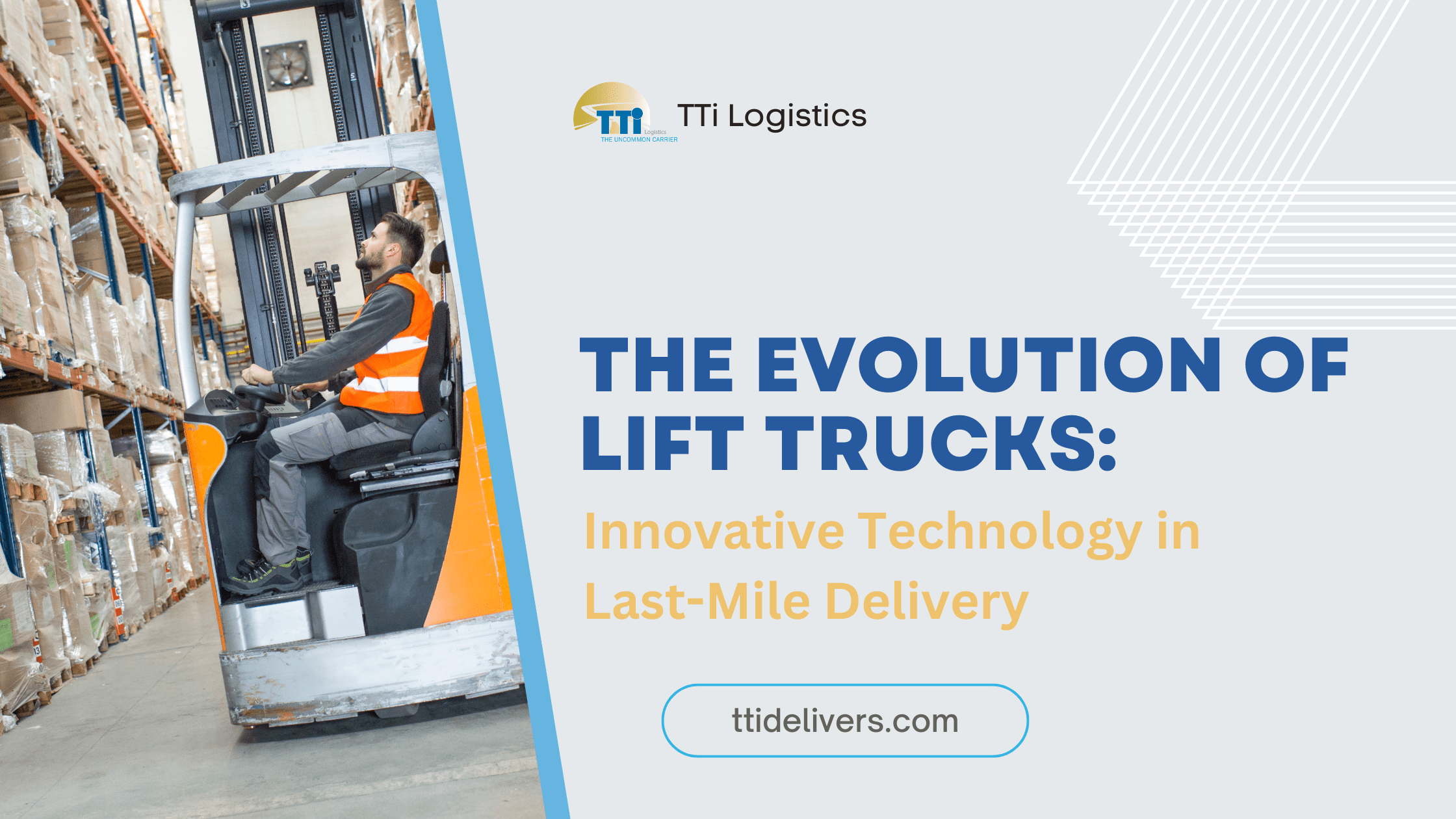Modern Innovations Enhancing Lift Truck Efficiency
Lift trucks, also known as forklifts, have long been essential tools in warehouses and distribution centers for moving heavy loads and pallets of goods. However, with the rise of e-commerce and the increasing demand for faster, more efficient delivery services, the role of lift trucks in last-mile delivery has evolved significantly. In this blog post, we’ll explore how innovative technology is revolutionizing the way lift trucks are used in last-mile delivery, improving efficiency, reducing costs, and enhancing the customer experience.
The Importance of Last-Mile Delivery
Last-mile delivery, the final leg of the supply chain that involves transporting goods from distribution centers to their ultimate destination, is a critical aspect of the logistics process. It is often the most complex and expensive part of the delivery process, accounting for a significant portion of overall transportation costs and impacting customer satisfaction. As consumers increasingly expect fast, reliable delivery options, the pressure on retailers and logistics companies to optimize last-mile delivery has never been greater.
Key Challenges of Last-Mile Delivery:
- Urban Congestion: Delivering goods in densely populated urban areas presents unique challenges, including traffic congestion, limited parking, and restricted access to certain areas. Navigating narrow streets and crowded sidewalks can be particularly challenging for delivery vehicles, requiring innovative solutions to optimize route planning and reduce delivery times.
- Delivery Window: Meeting customer expectations for prompt delivery requires precise coordination and efficient logistics operations. Retailers and logistics companies must carefully manage delivery windows to ensure on-time delivery while minimizing costs and maximizing efficiency.
- Customer Expectations: With the rise of e-commerce giants such as Amazon, consumers have come to expect fast, free delivery options with real-time tracking and updates. Meeting these heightened expectations requires innovative solutions and advanced technologies to optimize the last-mile delivery process and enhance the customer experience.
The Evolution of Lift Trucks in Last-Mile Delivery
Lift trucks have traditionally been used in warehouses and distribution centers to move pallets of goods from storage racks to loading docks. However, with the increasing demand for faster, more efficient delivery services, lift trucks are now being deployed in new and innovative ways to support last-mile delivery operations. Let’s explore some of the key technologies and trends driving the evolution of lift trucks in last-mile delivery:
1. Electric-Powered Lift Trucks:
Electric-powered lift trucks offer several advantages over their diesel or gas-powered counterparts, including lower operating costs, reduced emissions, and quieter operation. As sustainability becomes increasingly important for businesses and consumers alike, electric-powered lift trucks are gaining popularity in last-mile delivery operations. These eco-friendly vehicles are ideal for urban environments where air quality and noise pollution are major concerns, allowing retailers and logistics companies to meet regulatory requirements and corporate sustainability goals.
2. Compact and Maneuverable Designs:
In densely populated urban areas where space is at a premium, compact and maneuverable lift trucks are essential for navigating narrow streets, tight alleyways, and crowded sidewalks. Manufacturers are increasingly designing lift trucks with smaller footprints and tighter turning radii to optimize maneuverability and maximize efficiency in urban delivery environments. These compact designs allow lift trucks to access hard-to-reach areas and deliver goods directly to customers’ doorsteps, reducing the need for additional handling and minimizing delivery times.
3. Autonomous and Semi-Autonomous Technologies:
Advancements in autonomous and semi-autonomous technologies are revolutionizing the way lift trucks are used in last-mile delivery operations. Autonomous lift trucks equipped with sensors, cameras, and artificial intelligence algorithms can navigate warehouse aisles, load and unload pallets, and transport goods to designated locations with minimal human intervention. Semi-autonomous features such as collision avoidance systems, automatic braking, and remote monitoring enable lift truck operators to work more safely and efficiently, reducing the risk of accidents and improving productivity.
4. Integration with Warehouse Management Systems:
Integration with warehouse management systems (WMS) is essential for optimizing the performance of lift trucks in last-mile delivery operations. WMS software provides real-time visibility into inventory levels, order status, and delivery routes, allowing lift truck operators to prioritize tasks and optimize workflows for maximum efficiency. By seamlessly integrating with WMS platforms, lift trucks can receive real-time updates and instructions, enabling them to adapt to changing demand and delivery requirements on the fly.
Innovations Driving Last-Mile Delivery
Innovations in technology and logistics are driving the evolution of last-mile delivery, making it faster, more efficient, and more cost-effective than ever before. From drone delivery to autonomous vehicles, these innovations offer new opportunities for retailers and logistics companies to optimize their delivery operations and meet the growing demands of today’s consumers.
Key Innovations in Last-Mile Delivery:
- Drone Delivery: Drone delivery is revolutionizing last-mile delivery by offering fast, efficient delivery options for small packages and parcels. Drones can navigate urban environments with ease, bypassing traffic congestion and delivering goods directly to customers’ doorsteps in a matter of minutes. Companies such as Amazon Prime Air, UPS Flight Forward, and Wing are pioneering drone delivery services and testing pilot programs in cities around the world.
- Autonomous Vehicles: Autonomous vehicles (AVs) are transforming the way goods are transported and delivered, offering fast, efficient delivery options for businesses and consumers. From self-driving trucks to delivery robots, AVs offer a range of innovative solutions for last-mile delivery and urban logistics. Companies such as Waymo, TuSimple, and Nuro are developing AV technologies and testing pilot programs in partnership with retailers, logistics providers, and local governments.
- Blockchain Technology: Blockchain technology is revolutionizing supply chain management by providing transparency, security, and traceability to global trade networks. By leveraging blockchain solutions, retailers and logistics companies can track the movement of goods from production to delivery, ensuring greater transparency and accountability throughout the supply chain. Blockchain technology also enables retailers to verify the authenticity of products and reduce the risk of counterfeiting, enhancing consumer trust and brand reputation.
The Future of Lift Trucks in Last-Mile Delivery
In conclusion, the evolution of lift trucks in last-mile delivery is reshaping the way goods are transported and delivered in urban environments. With the rise of e-commerce and the increasing demand for faster, more efficient delivery services, lift trucks are playing a pivotal role in optimizing logistics operations and enhancing the customer experience. By embracing innovative technologies and trends such as electric-powered vehicles, compact designs, autonomous technologies, and integration with warehouse management systems, retailers and logistics companies can streamline their last-mile delivery operations, reduce costs, and meet the growing demands of today’s consumers.
Need to Optimize Your Last-Mile Delivery? 🚚 TTI Delivers’ advanced lift truck solutions streamline operations, enhance efficiency, and improve customer satisfaction. Get started today!







